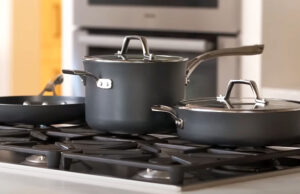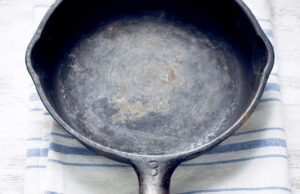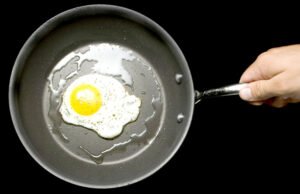As an Amazon Associate, I earn from qualifying purchases at no extra cost to you.
Whirlpool Dishwasher Troubleshooting: Fix Issues Fast
Are you tired of your Whirlpool dishwasher not cleaning dishes properly or acting up? I had the same problem, and I fixed it without calling a repairman. In this article, you will learn simple and clear ways to troubleshoot your Whirlpool dishwasher. You can save time, money, and stress by following easy solutions that anyone can do at home.
Check Power and Door Latch
The first thing to check is if your dishwasher is getting power. Sometimes the outlet might be off, or the plug is loose. Also, check the circuit breaker; it may have tripped. If the dishwasher does not get power, it will not start, so fixing this is the first simple step.
Next, check the door latch. Whirlpool dishwashers will not start if the door is not closed properly. Open and close it firmly to make sure it clicks. Sometimes the latch is dirty or broken, so clean it gently with a damp cloth. If it is broken, replacing it is easy and cheap.
Also, check for error lights on the control panel. Many Whirlpool dishwashers show codes when something is wrong. Look at your manual to see what the codes mean. Resetting the dishwasher can sometimes fix small issues. Just turn it off, wait a few minutes, and turn it back on.
Finally, listen for unusual sounds. If the dishwasher hums or buzzes without starting, it may be a motor or electrical problem. Check the power and door latch first before calling for service. Fixing these simple things can solve most starting problems at home.
- Ensure dishwasher is plugged in
- Check circuit breaker
- Close door firmly
- Clean or replace door latch
- Observe error codes
- Listen for unusual sounds
Inspect Water Supply and Filter
Water problems are very common. First, check if the water supply is turned on. Look under the sink and make sure the valve is open. If the water is off, the dishwasher will not fill, and the dishes will remain dirty. This simple check can save a lot of frustration.
Next, check the water inlet hose. Sometimes it is kinked or clogged. Straighten the hose and remove any blockages. Whirlpool dishwashers need steady water flow, so a blocked hose can stop them from working. Also, check the water pressure. Low water pressure can reduce cleaning power.
Then, inspect the filter at the bottom of the dishwasher. Food particles and debris can clog it. Remove the filter carefully and rinse it under running water. Cleaning it regularly helps the dishwasher work efficiently. It also prevents bad odors and poor cleaning results.
Finally, examine the spray arms. If they are blocked with food or mineral deposits, water will not spray properly. Remove the arms and clean all holes. This ensures water reaches all dishes. After this, your dishwasher should clean much better.
- Make sure water supply is on
- Check inlet hose for kinks or clogs
- Clean the filter under running water
- Remove and clean spray arms
- Ensure water pressure is sufficient
Examine Drainage Issues
Sometimes the dishwasher fills with water but does not drain. Start by checking the drain hose. Make sure it is not bent or blocked. A blocked hose stops water from leaving the dishwasher. Straightening or clearing the hose can fix many drainage problems.
Next, check the sink drain connection. If your dishwasher shares a drain with the sink, make sure the sink is not clogged. A clogged sink can back up water into the dishwasher. Run water in the sink to see if it drains quickly. This simple test helps identify drainage problems.
Also, inspect the dishwasher drain pump. It may be blocked with food or debris. Remove any visible obstructions carefully. Sometimes small pieces of glass or food can stop the pump from working. Whirlpool makes the pump easy to access for cleaning.
Finally, make sure the air gap (if installed) is clean. This small device prevents backflow but can get blocked with debris. Remove the cover and clean it under running water. After this, your dishwasher should drain efficiently without leaving dirty water behind.
- Check the drain hose for kinks or clogs
- Ensure the sink drain is clear
- Inspect and clean the drain pump
- Clean the air gap device
- Test drainage after cleaning
Clean and Maintain Interior Parts
The inside of the dishwasher can get dirty and affect cleaning. First, remove and clean the racks. Food or soap buildup can reduce water flow. Wash them in warm water with mild soap. Cleaning racks helps dishes get fully clean every cycle.
Next, clean the detergent dispenser. Soap residue can clog it and stop detergent from releasing. Open the dispenser and wash it gently. This ensures the dishwasher uses detergent properly, improving cleaning results. Regular cleaning prevents buildup.
Then, check the heating element. This part warms water for better cleaning. If it is covered with mineral deposits, cleaning it carefully helps performance. Use a soft cloth or sponge to wipe it. Avoid harsh chemicals that can damage the element.
Finally, run a cleaning cycle with a dishwasher cleaner. This removes hidden grease and mineral deposits. It also reduces odors and improves washing power. Running a monthly cleaning cycle keeps the dishwasher running efficiently for years.
- Remove and clean racks
- Clean detergent dispenser
- Wipe heating element carefully
- Run a cleaning cycle monthly
- Remove buildup from all interior parts
Control Panel and Settings Check
If your dishwasher runs but dishes are not clean, check the control panel. Make sure the cycle selected matches the load. Sometimes using a quick wash on very dirty dishes does not work well. Choose the right cycle for your dishes.
Next, look at special settings. Whirlpool dishwashers have options like sanitize or heavy wash. Check if any of these are on by mistake. Adjust settings to match your load. Simple changes can improve washing performance without repairs.
Then, reset the dishwasher. Many small issues are fixed with a reset. Turn off the power for a few minutes and turn it back on. This clears minor errors and can make the dishwasher run normally again.
Finally, inspect buttons for damage. Sticky or broken buttons can prevent proper operation. Clean around buttons gently. If needed, replace damaged buttons. This keeps the control panel responsive and avoids interrupted cycles.
- Check cycle selection
- Adjust special settings
- Reset dishwasher power
- Clean and inspect buttons
- Ensure correct operation of all controls
Professional Help and Maintenance Tips
Sometimes problems need a professional. If you tried all checks and the dishwasher still fails, call Whirlpool service. They have experience and correct tools for complex issues. Professionals can fix motor, pump, or electronic problems safely.
Regular maintenance can prevent most issues. Clean filters monthly, wipe interiors, and run cleaning cycles. Avoid overloading the dishwasher. This keeps water flowing and dishes clean. Proper care extends the life of your appliance.
Also, check hoses and connections yearly. Replace any worn parts before they break. This prevents leaks and expensive damage. Keep the manual handy for troubleshooting tips. Following simple rules helps avoid emergencies.
Finally, note unusual noises or smells. These signs often show early issues. Acting fast prevents bigger problems. Combine this with regular maintenance for the best performance. Your dishwasher will stay reliable for years.
- Call Whirlpool service for complex issues
- Clean filters and interiors monthly
- Avoid overloading dishwasher
- Check hoses and connections yearly
- Act on unusual noises or smells
Final Thoughts
Whirlpool dishwashers are reliable but need care. Most problems are simple and easy to fix at home. Checking power, water, drainage, and cleaning parts solves most issues. Control settings and occasional professional help ensure smooth performance. Follow these steps, and your dishwasher will clean dishes efficiently for many years. Maintenance and small checks save time and money.
| Issue | Quick Fix |
|---|---|
| No power | Check plug and breaker |
| Door won’t latch | Clean or replace latch |
| Water not filling | Open water supply, check hose |
| Poor cleaning | Clean filter and spray arms |
| Not draining | Clear hose, pump, air gap |
| Control problems | Reset, check buttons, adjust cycle |
Frequently Asked Questions (FAQs)
Is it normal for Whirlpool dishwasher to make noise?
Yes, some noise is normal when water sprays or the motor runs. However, loud grinding or clanking is not normal. It could mean a loose part, broken pump, or debris inside. Checking spray arms, racks, and filters often solves noise issues. Regular cleaning helps keep noise low.
Can I fix a clogged dishwasher drain myself?
Yes, most clogs are easy to clear. Check the drain hose, air gap, and sink connection. Remove debris from the pump and filters. Avoid harsh chemicals; use warm water and gentle cleaning. Most people can fix this without a technician.
Do I need to run a cleaning cycle regularly?
Yes, running a cleaning cycle once a month is best. It removes grease, soap buildup, and mineral deposits. This keeps dishes clean and prevents odors. Monthly cleaning also helps dishwasher parts last longer.
Is it safe to use dishwasher cleaner with food inside?
No, always run dishwasher cleaner empty. Cleaning cycles use chemicals and heat that are not safe for dishes or utensils. Follow the instructions on the cleaner to avoid damage and ensure proper cleaning.
Can low water pressure affect cleaning?
Yes, low water pressure reduces washing efficiency. Dishes may stay dirty or spots remain. Check your home water pressure and make sure valves are fully open. Cleaning spray arms also helps improve water distribution.
Do I need professional help for heating element issues?
Yes, heating element problems are safer for professionals. They can test and replace the element safely. Attempting this without experience can be risky. However, cleaning mineral buildup around it is safe to do at home.
Is it okay to overload the dishwasher?
No, overloading blocks water and detergent from reaching all dishes. This causes poor cleaning. Load dishes with space between them and place large items strategically. Proper loading ensures effective cleaning and prevents damage.
Can I reset the dishwasher if it stops mid-cycle?
Yes, resetting can solve minor errors. Turn off the power for a few minutes and turn it back on. This clears electronic glitches and allows the cycle to restart normally. Always check for leaks or obstructions first.




